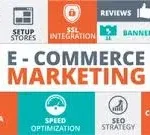
In the ever-evolving digital landscape, selling digital products has become one of the most accessible and profitable ways to make money online. Digital products, unlike physical goods, offer infinite scalability, low overhead costs, and the ability to reach a global audience with minimal effort. Whether you’re a content creator, entrepreneur, or hobbyist, there’s a world of opportunity waiting for you in the digital product market. In this guide, we’ll cover everything you need to know to get started with selling digital products, including how to create them, the best platforms to sell on, and key strategies for marketing your digital products effectively.

What Are Digital Products?
Digital products are intangible goods that exist in digital form and can be sold and delivered online. Unlike physical items, there’s no inventory to manage, no shipping costs, and no worries about handling returns or exchanges. Among the most popular categories of digital goods are:
- Ebooks: Ideal for authors, bloggers, and educators who want to share their knowledge or stories.
- Online courses and tutorials: Perfect for experts in any niche looking to teach their skills or offer valuable training.
- Software and apps: Developers can create downloadable software, apps, or plugins for specific platforms.
- Templates and presets: Useful for designers, photographers, or content creators looking to sell creative tools.
- Memberships and subscriptions: You can offer exclusive content or services through a membership model, creating a steady source of recurring revenue.
Why Sell Digital Products?
There are many reasons why selling digital products is a lucrative business model, especially for those looking to generate passive income. The following are some benefits of selling digital goods:
- High-profit margins: Once the product is created, there are minimal ongoing costs. There’s no need to pay for storage or shipping, which makes profit margins significantly higher than for physical goods.
- Scalability: Digital products can be sold repeatedly without the need to restock, meaning you can continue to sell the same product to an unlimited number of customers.
- Passive income potential: After creating and launching a digital product, you can continue to make sales without needing to constantly trade time for money.
- Global reach: Digital products can be sold to customers all around the world, eliminating geographical barriers.
- Automated delivery: Many platforms offer seamless integration for delivering digital products automatically once a purchase is made, saving time and effort.
Steps to Sell Digital Products
- Choose Your Niche
The first step to selling digital products is to determine your niche. What kind of products will you create? Who is your target audience? Your niche should be a blend of your expertise, passion, and market demand. If you’re knowledgeable about a specific subject, consider creating digital products that solve problems or offer solutions within that space. Research your competitors and look for gaps in the market where you can offer something unique.
- Create Your Product
Once you’ve identified your niche, it’s time to create your digital product. The type of product you create will depend on your skills and the needs of your audience. Here are a few ideas:
- Ebooks: Write a detailed guide or manual on a topic you’re knowledgeable about. You can use tools like Microsoft Word or Google Docs to create your content and export it as a PDF.
- Online Courses: Use platforms like Teachable or Udemy to structure your course material, record video lessons, and offer downloadable resources.
- Software or Apps: For tech-savvy entrepreneurs, building apps or plugins can be a great way to sell digital tools that help others solve specific problems.
- Designs and Templates: If you’re a graphic designer or photographer, consider creating design templates, fonts, or Lightroom presets to sell.
- Choose the Right Platform to Sell
There are many platforms available for selling digital products, each with its unique advantages. Here are some popular platforms to consider:
- Etsy: Although traditionally known for physical handmade goods, Etsy also allows users to sell digital products such as printables, designs, and templates.
- Gumroad: A platform that allows creators to sell everything from ebooks to music, courses, and software. Gumroad offers flexible pricing and direct access to your customers.
- Sellfy: This platform is geared towards creators selling digital products like ebooks, music, and art. Sellfy offers easy integration with social media and website builders.
- Your Own Website: You can use platforms like Shopify or WordPress combined with plugins like WooCommerce to create your store and sell directly from your site.
- Set Your Pricing
Pricing is a crucial element in the success of your digital product. Price your product too high, and you might scare away potential buyers; too low, and you could devalue your work. To determine the right price:
- Research competitors to see what similar products are selling for.
- Consider the value your product provides.
- Factor in your target audience’s budget.
- Experiment with different pricing models, such as one-time payments, subscriptions, or pay-what-you-want options.
- Market Your Digital Product
To successfully sell your digital products, you need an effective marketing strategy. Here are a few methods to consider:
- SEO: Optimize your product pages and content for search engines to increase organic traffic. Use relevant keywords (such as “sell digital products”) to rank higher on Google.
- Email Marketing: Build an email list of potential customers and send regular updates, promotions, and valuable content to keep them engaged. Tools like Mailchimp or ConvertKit can help you automate your email marketing efforts.
- Social Media Marketing: Leverage platforms like Instagram, Twitter, Pinterest, and TikTok to showcase your digital products and drive traffic to your store. Share behind-the-scenes content, tutorials, or customer testimonials to build trust.
- Influencer Collaborations: Partner with influencers in your niche to promote your digital products to a broader audience.
- Paid Advertising: Consider using Google Ads, Facebook Ads, or Pinterest Ads to reach a larger audience faster.
- Provide Excellent Customer Support
Even though digital products don’t come with physical handling challenges, it’s essential to provide excellent customer support. Make sure to:
- Offer a clear and concise FAQ section that addresses common questions or issues.
- Provide easy access to customer support via email or live chat for technical help or queries.
- Create tutorial videos or documents to guide users on how to use your product effectively.
- Offer Bonuses and Discounts
To increase sales and customer loyalty, consider offering incentives such as bonuses or discounts. You can:
- Bundle multiple digital products together at a reduced price.
- Offer a limited-time discount to encourage urgency.
- Provide extra resources, like bonus ebooks or templates, for those who purchase your product within a specific timeframe.
Conclusion
Selling digital products is an excellent way to generate passive income, share your knowledge, and scale your business. By choosing the right niche, creating valuable products, and utilizing the best platforms and marketing strategies, you can tap into a global market and turn your digital product business into a sustainable source of income.
For more insights on how to make money online, you can explore this comprehensive guide that provides additional tips and ideas for monetizing your digital creations.









